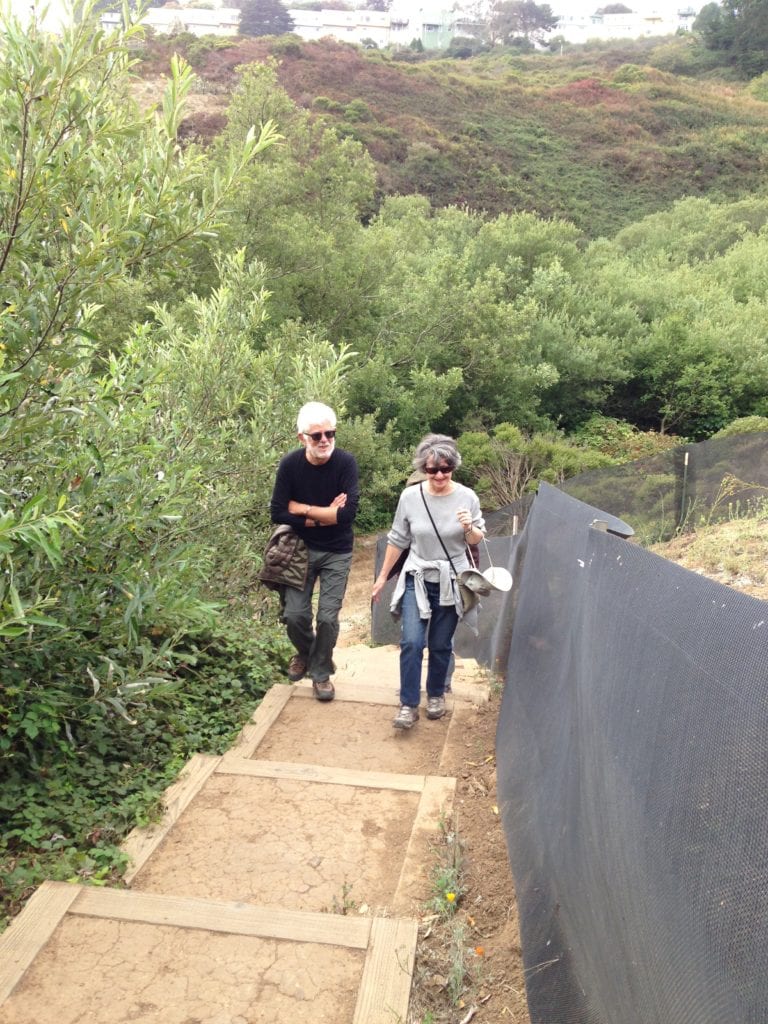Story and photos by Murray Schneider
The Recreation and Park Department’s 15-month Glen Canyon Trails Improvement Project is expected to be completed in early 2015.
Work crews soon will maneuver their last Bobcat earth mover along Alms Road, exiting San Francisco’s 70-acre natural area, leaving in their wake freshly minted recreational trails built with scores of sturdy box steps.
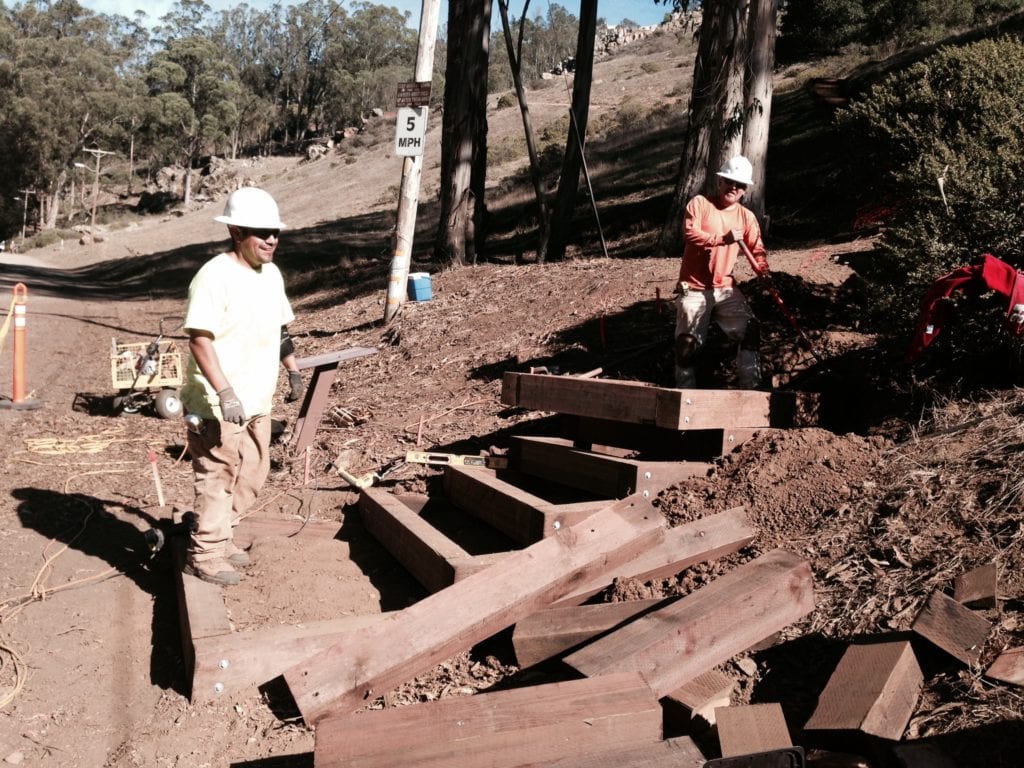 As recently as December 10, Yerba Buena Engineering & Construction workers fashioned straw berms along Islais Creek banks, designed to prevent mudslides impinging on their work as they anticipated the next day’s deluge.
As recently as December 10, Yerba Buena Engineering & Construction workers fashioned straw berms along Islais Creek banks, designed to prevent mudslides impinging on their work as they anticipated the next day’s deluge.
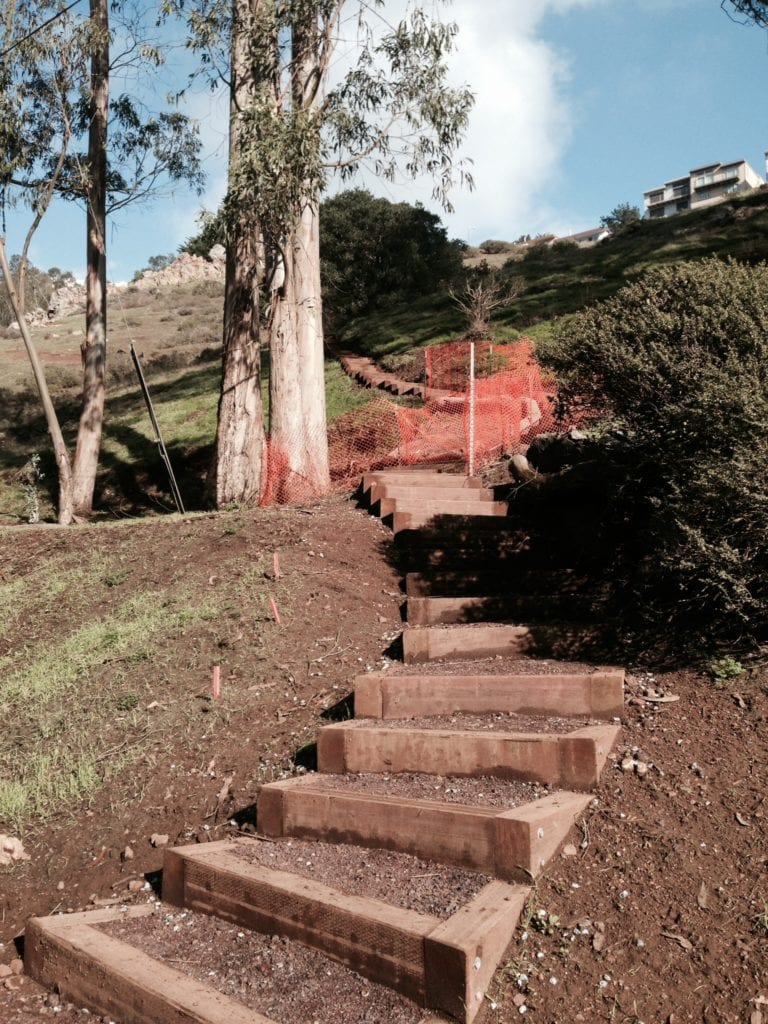 Funded by the 2008 Clean and Safe Neighborhood Parks Bond to the tune of $900,000, the project was supported with two additional grants totaling $320,587. More financing came from the 2013 Habitat Conservation Fund in the amount of $130,000.
Funded by the 2008 Clean and Safe Neighborhood Parks Bond to the tune of $900,000, the project was supported with two additional grants totaling $320,587. More financing came from the 2013 Habitat Conservation Fund in the amount of $130,000.
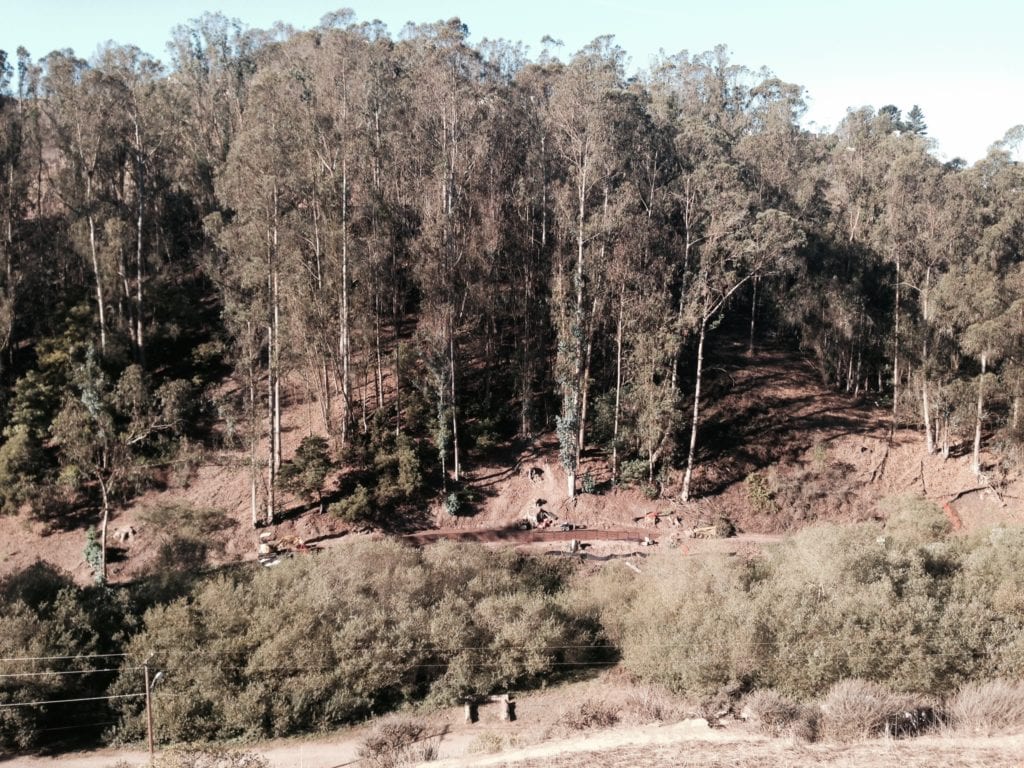 Recreation and Park’s Glen Canyon Trails Project, which was planned over several years during 12-different community meetings, also removed hazardous trees, improved drainage, conducted sediment basin repair, and updated Americans for Disability Act (ADA)) access between Bosworth Street and Silver Tree camp-Glenridge nursery school.
Recreation and Park’s Glen Canyon Trails Project, which was planned over several years during 12-different community meetings, also removed hazardous trees, improved drainage, conducted sediment basin repair, and updated Americans for Disability Act (ADA)) access between Bosworth Street and Silver Tree camp-Glenridge nursery school.
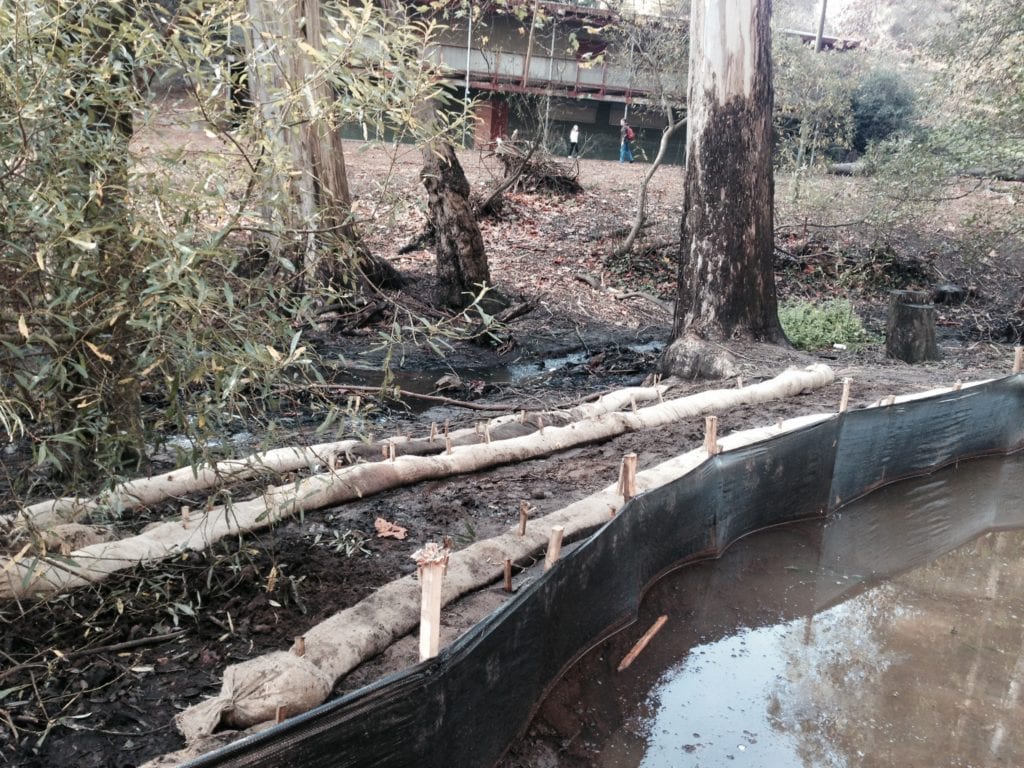 Glen Canyon strollers, dog-walkers, summer campers, nursery school children and their parents will now enjoy improved pedestrian access in a sanctuary removed from the city’s urban bustle. Along trails named Gum Tree Girls, Islias Creek and Coyote Crags, they can continue observing coyotes, red-tailed hawks, great horned owls and white-crowned sparrows.
Glen Canyon strollers, dog-walkers, summer campers, nursery school children and their parents will now enjoy improved pedestrian access in a sanctuary removed from the city’s urban bustle. Along trails named Gum Tree Girls, Islias Creek and Coyote Crags, they can continue observing coyotes, red-tailed hawks, great horned owls and white-crowned sparrows.
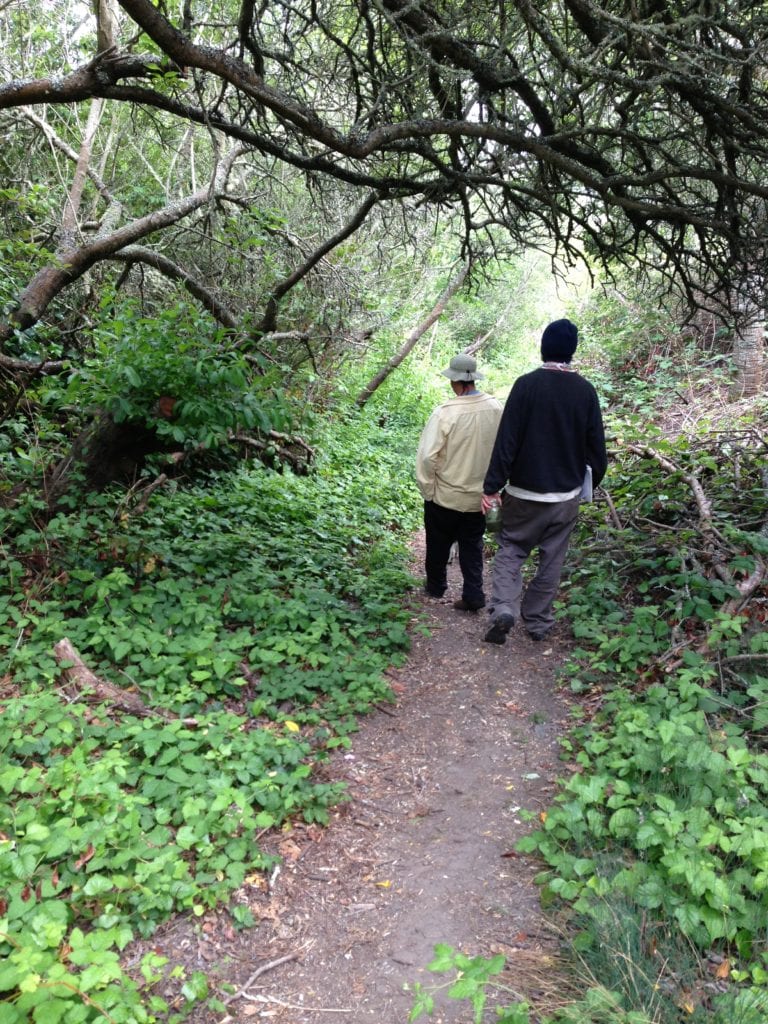 “The canyon trail work is great and it’ll benefit the young and old, joggers and walkers,” said Jim Hanratty, a Friends of Glen Canyon Park volunteer, and who lives on the first block of Stillings Avenue. “There’s a little something for everyone.”
“The canyon trail work is great and it’ll benefit the young and old, joggers and walkers,” said Jim Hanratty, a Friends of Glen Canyon Park volunteer, and who lives on the first block of Stillings Avenue. “There’s a little something for everyone.”
Winding through a variety of habitats, from riparian willow to rocky grass and scrublands on the canyon’s steep eastern slope, recreational walkers can negotiate a path from Elk Street to Christopher Playground.
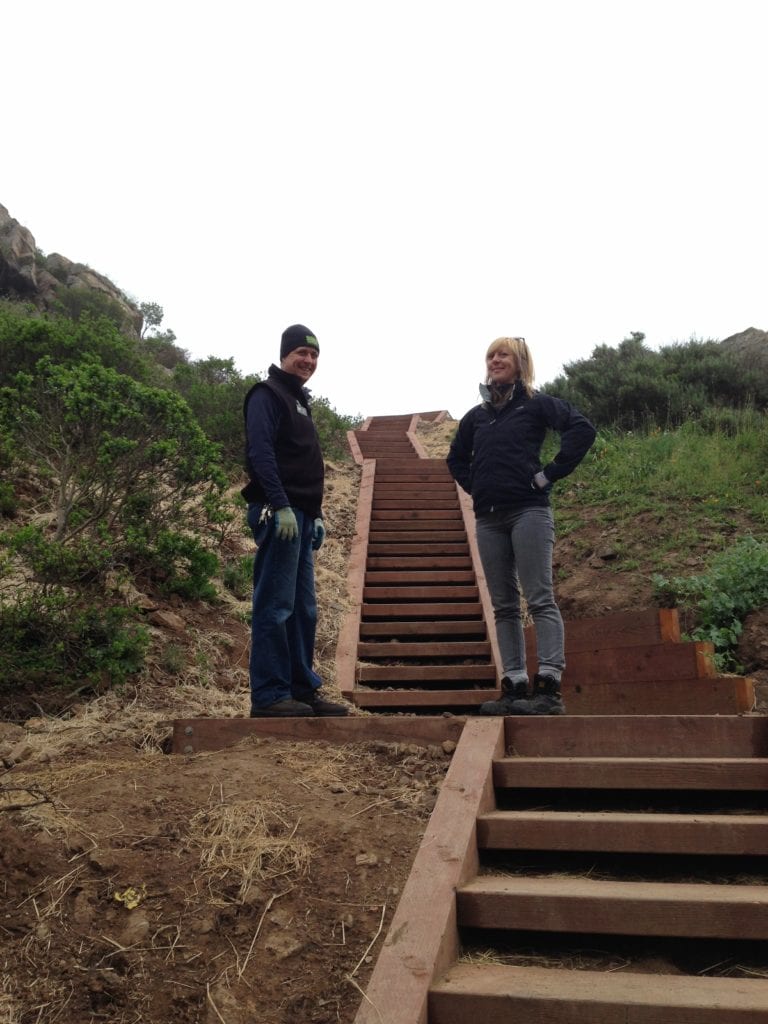 It was possible to do so before construction began in October 2013, but now, assisted by durable box and stringer steps, hikers have a reduced fear of faltering or straying off trail, which in past years contributed to erosion and endangered sensitive habitat areas.
It was possible to do so before construction began in October 2013, but now, assisted by durable box and stringer steps, hikers have a reduced fear of faltering or straying off trail, which in past years contributed to erosion and endangered sensitive habitat areas.
Taking advantage of three new stream crossings, canyon users of all ages can now better take in several Islais Creek restoration refuges. While protected by new retaining walls and split-rail fencing, hikers can observe Franciscan chert outcrops and eucalyptus and redwood trees, each of which borders either the east or west side of one of San Francisco’s two remaining above ground running creeks.
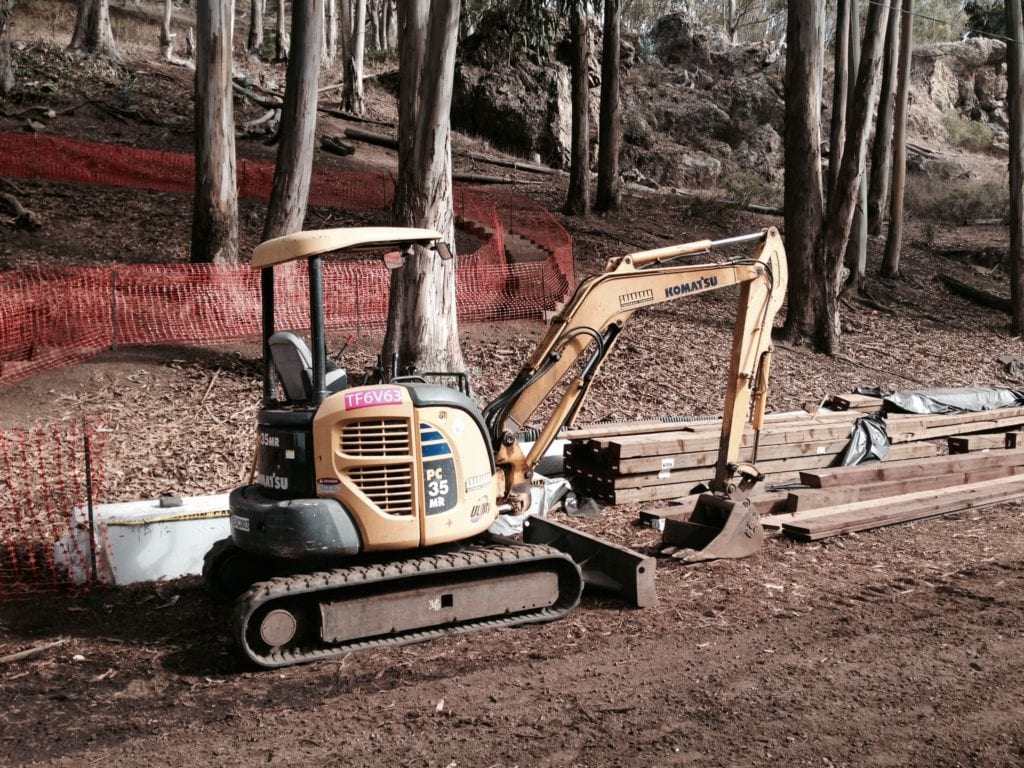 What caps the project, though, is a final 300-yard segment of trail mosaic.
What caps the project, though, is a final 300-yard segment of trail mosaic.
Yet to be constructed is a path that will be the length of three football fields, which will eventually switchback through San Francisco Unified School District property and add the last link to Recreation and Park’s Creeks to Peaks trail vision.
With the project in mind, Phil Ginsburg, General Manager of Recreation and Park weighed in:
“The Creeks to Peaks trail project is a model trail system. It provides easy public access to a natural oasis in an urban environment.”
Seeded with $85,000, Creeks to Peaks is a featured project of the San Francisco Park Alliance, which held a gala dinner in September at the Randall Museum to trumpet Recreation and Park’s greenway centerpiece.
When completed walkers will be able to dogleg west of stanchion-built Turquoise Way houses, step over a freshly-built Islais Creek stream crossing and, following interpretative and wayfinding signage, strike a path to Portola Drive. Utilizing this green-belt throughway, walkers never again need suffer exhaust fumes from cars along O’Shaughnessy Boulevard.
Heading north, leaving the School of the Arts behind them, hikers can cross the heavily trafficked street at Glenview Drive and continue up an uninterrupted stretch that leads to Twin Peaks.
